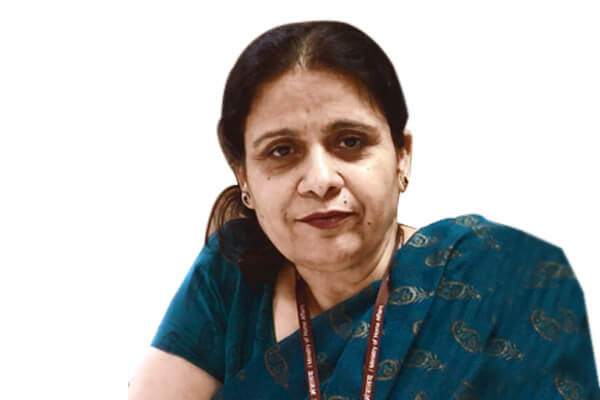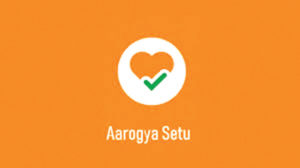
Since the Corona outbreak across the world has brought governments, industries, economy, education and even social lives of people at a halt, technology has shown the ray of hope to keep the systems running and surf through the tough times. And, considering the Indian scenario, National Informatics Centre (NIC), an attached office of the Ministry of Electronics and Information Technology (Meity), Government of India, has been thrusting the engine of governance from the Centre to the State and to the Local levels by empowering India’s e-Governance through advanced technologies. Dr Neeta Verma, Director General, NIC, throws light on the initiatives taken by NIC to strengthen the Indian e-governance amidst the Corona in an interview with Souvik Goswami of Elets News Network (ENN).
India and the world are going through one of the most challenging times due to the Coronavirus crisis. Governments across the globe are on their toes now, especially rendering services to the citizens during the lockdown. How NIC is spearheading the technology transformation and upholding the spirit of e-governance in these difficult times for various government agencies in India?
As the technology partner of the government, our objective at NIC has always been to provide technology-driven solutions for Central and State governments in various aspects of development. We established a nationwide state-of-the-art ICT infrastructure exclusively for the government departments for internal communications, program management and online delivery of government services as well as citizen engagement. This infrastructure comprises High-Speed Secure Network, Data Centres, Government Cloud, Messaging & Video Conferencing services pan India.

Over the years, we have built several digital solutions to support the government at various levels from Centre to States to District Administrations. Through our technologyenabled services and platforms for the government, we have successfully created a digitally-enabled ecosystem which is helping them continue their work during the lockdown due to COVID-19 pandemic. Services such as Video Conferencing are significantly contributing to the functioning of the government departments and organizations. During the last one month of lockdown period, NIC has helped in organizing over 55,000 video conferencing sessions across 2,00,000 users. The Supreme Court of India is also managing its work through video conferencing and has directed other courts to make use of video conferencing for court hearings. This is ensuring that the judiciary is functioning amidst the crisis and is addressing important matters on a day to day basis.
Also Read: Innovations in India’s e-Governance Have Leapfrogged: Dr Neeta Verma

Similarly, the Direct Benefit Transfer (DBT) system has facilitated the easy transfer of benefits directly to the bank or post office accounts of the citizens. NIC has been working as the technology partner to the Direct Benefit Transfer (DBT) system, which is expediting the release of relief amount to beneficiaries of various schemes, launched by the Central and State governments. The governments are leveraging this platform for providing financial assistance to the poor to sustain the lockdown period. It is noteworthy that in the first two weeks of April, DBT has facilitated over 10 crore transactions amounting to Rs 19,000 crore transferred under 200 plus government schemes and initiatives.
“Aadhaar, Direct Benefit Transfer and Digital Payments have helped in transforming more and more citizen-centric services into a faceless, cashless and paperless modes. Use of emerging technologies such as Blockchain, Natural Language Processing, Machine Learning, Deep Learning, Conversational AI, etc., shall introduce a lot of innovation in enhancing the user experience and reach of the government services to the citizens of India in Urban & Rural alike.”
Under the ambit of digital India, we have built various platforms such as Public Distribution System, eOffice, eHospital, eChallan, eVahan, Sarathi, eCounselling, eCourts & eWay Bill to name a few. These platforms and services built under various government programmes and schemes are always helping us connect with the citizens and the government irrespective of any crisis or challenges we may experience.
Can you highlight some of the IT systems built specifically to help the government to fight against COVID-19?
Aarogya Setu app

Aarogya Setu App launched recently, is a mobile application aimed to connect our health services closely with the people of India, in our collective fight against COVID-19. Aarogya Setu empowers people with better information on the potential risk of infection, self-assessment tools and contextual advice. Aarogya Setu joins Digital India for the health and wellbeing of every Indian. The app will augment the government’s initiatives in proactively reaching out to and informing the users the potential risk of infection, best practices and relevant medical advisories pertaining to the containment of COVID-19 pandemic. Aarogya Setu is available on both iOS and Android. The app is currently available in 12 languages. It already has close to 9.8 crore downloads.
Also Read: The Digital Ecosystem Needs a Legal Framework for Governance: Ravi Shankar Prasad
Pass Issuance System for movement during lockdown
NIC has helped as many as 21 State governments in setting up e-pass issuance systems to help citizens in essential services to move out or in case of an emergency during the lockdown period. Over 35 lakh e-passes have already been processed using these systems. These passes can be stored in Smartphones as well as can be accessed through SMSs on feature phones. Low Code/ No Code Platform of NIC – Service Plus has enabled many state governments in quickly putting up end to end automated pass issuance systems without writing any piece of code.
Systems to help Monitoring & Management of Pandemic
NIC has built a number of systems for the Central government departments as well as state governments to monitor and manage different aspects of pandemic right from the dissemination of Information, advisories, guidelines to quarantine management, surveillance, hospital management, COVID tests, Telemedicine, Tele-education, etc. Similarly, the mobile app ‘Kisan Rath’ is developed to facilitate the transportation of agricultural produce.
What are your priorities for NIC in 2020?
These are unprecedented times and various organizations with different competence have come together to help each other and the country at large. I firmly believe that technology holds the promise of delivering better services to citizens with much ease. As the government has implemented many eGovernance solutions, this has brought in a major shift towards embracing a digital ecosystem in the government. This has further led to tremendous growth in the generation of data related to various aspects of Government functions and services. Understanding that data generation has also led to a surge in the demand of advanced data analytics, NIC in partnership with NICSI has established a Centre of Excellence in Data Analytics (CEDA) which is providing quality data analytics services to the government departments in different domains. I am sure CEDA will contribute immensely to the government’s data-driven initiatives.

Artificial Intelligence Technologies have also demonstrated a lot of potential in governance and citizen services. To explore potential use cases of AI technologies in the government, we have set up the Centre of Excellence for Artificial Intelligence (CoEAI). CoEAI is exploring technologies and tools in different aspects of AI such as machine learning, deep learning, text analytics, computer vision as well as conversational AI and building prototypes to demonstrate the use of these technologies in future e-governance applications. I am glad that some of their prototypes have already been rolled out in government programmes. In the days to come, our aim is to partner with many more departments and build a proof of concepts for innovative applications of these emerging technologies for governance & citizen services.
“Through our technology-enabled services and platforms for the government, we have successfully created a digitally enabled ecosystem which is helping them continue their work during the lockdown due to COVID-19 pandemic. Services such as Video Conferencing are significantly contributing to the functioning of the government departments and organizations. During the last one month of lockdown period, NIC has helped in organizing over 55,000 video conferencing sessions across 2,00,000 users.”
The current COVID-19 situation has changed the way government offices work. To ensure everyone’s safety, we had the challenge of isolating ourselves and working remotely. I believe this has brought in an opportunity to work towards innovating and developing safe and secure ‘Work from Home’ solutions. Although the government officials currently have access to video conferencing services, emails and SMS, a lot more can still be achieved. Considering our pan-India presence and building IT solutions for the governments, we should focus on developing safe and secure work from home solutions for government offices pan India.
How do you see the evolution of e-governance in India?
With the availability of high-speed internet and increasing affordability of smartphones, there has been a significant shift in the way government services are offered. We are now experiencing a whole lot of functionalities in our existing service which are focused on improving the overall user experience. Aadhaar, Direct Benefit Transfer and Digital Payments have helped in transforming more and more citizen-centric services into a faceless, cashless and paperless modes. Use of emerging technologies such as Blockchain, Natural Language Processing, Machine Learning, Deep Learning, Conversational AI, etc., shall introduce a lot of innovation in enhancing the user experience and reach of the government services to the citizens of India in Urban & Rural alike.
Last one month of Lockdown across the nation to contain the spread of Coronavirus has demonstrated the power of Digital India. Video conference platforms and work from home solutions have helped many businesses to continue to deliver amidst the lockdown. Governments have also been able to continue their work. Besides video conference, NIC’s eOffice platform is helping the government officers to work from home in a seamless & secure manner. Within the last month of lockdown, 31,000 government officials have worked on eOffice and created 50,000 e-files. There have been over 10 lakh transactions on files. Tele-education is another domain which has picked up a lot of momentum.
Not only students in higher education are having their classes online, but also their exams are being conducted online. School education has demonstrated how children in primary classes have been able to leverage digital platforms for their classes across the country. This has clearly demonstrated the digital readiness of citizens and businesses to embrace more and more government services online. This has also demonstrated penetration of stable telecom and broadband infrastructure across the country. Faceless, Cashless & Paperless government services will be the new normal.
How do you define the importance of eGov magazine in India’s e-governance journey?
eGov magazine has been extremely successful in covering different dimensions of technology applications in government for a long time. Its coverage is quite comprehensive, right from the national perspective to IT applications in State governments, District Administrations to Local Bodies. It is an important platform with a wide spectrum to share experiences by the government, industry and academia on eGov policies and implementations. I would like to compliment the entire team of eGov for their commendable efforts in making it a leading magazine in the eGov space.
Be a part of Elets Collaborative Initiatives. Join Us for Upcoming Events and explore business opportunities. Like us on Facebook , connect with us on LinkedIn and follow us on Twitter, Instagram.











